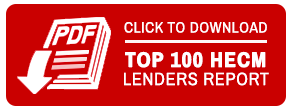
Survey finds 1-in-3 would prefer to move elsewhere
Analyst predicts fewer new HELOCs in 2019

It certainly won’t stop those with a home equity line of credit or HELOC from tapping their equity, but it may give pause to those considering the loan. Housing Wire reports Bankrate’s Chief Analyst Greg McBride saying there will not be strong demand for HELOCs in 2019. This despite some predicting boom in home equity lending. “Yes, people are staying in their homes longer, home prices have gone up, people have more equity than they’ve had before, and it’s still a place that people look when they need access to significant chunk of money, But because of the fact that there is a wider aversion to borrowing from home equity than there was 12 years ago, the volumes are just not going to be what we had seen in previous economic cycles” he said. Perhaps the memories of the housing crash versus anticipated Federal Reserve interest rate hikes will give some pause before incurring another financial obligation. The good news? Despite the HECM ’s significant upfront FHA insurance premiums, many may find the HECM’s line of credit attractive in avoiding the risk of rising monthly payments.
Researchers at Age Friendly Ventures found one-third of today’s retirees would prefer not to age in place, but to move elsewhere. The top three influencing factors are family (65%), livability (36%) and the climate (32%). The cost of living is motivating some consider moving, not just to another state, but internationally. Last month I spoke with a well-respected financial advisor in our community who shared that increasingly the choice of where to retire is weighed, especially in states with high-income taxes cost of living. Despite this Age Friendly’s study found 2 out of 3 retirees did not conduct in-depth research to determine where to retire. While the majority of retirees do remain in place despite their stated desires, those who do move can retain more of their liquid assets by utilizing the HECM for purchase.
Any industry finds itself challenged when the regulations and rules which govern it remain uncertain. With that in mind, one lender says proprietary reverse mortgages are the solution. New York-based Quontic Bank CEO Steven Schnall thinks so. “I think the proprietary mortgage is the industry’s solution to the whipsawing around that HUD is causing with all the guideline changes.” The number 17 ranked HECM lender plans on prioritizing proprietary loans this year in the effort to reclaim some of their lost HECM volume. Being in New York does come with its own unique challenges. The state prohibits lenders from originating non-agency reverse mortgages but Schnall remains optimistic being a federally-chartered bank. Quontic’s strategy makes sense for lenders in states with high-valued properties while others continue to adapt and implement strategies to adjust to the new norm of originating HECM loans.














